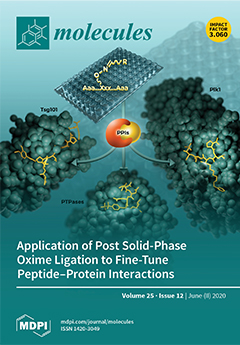Fabrication of heterostructures by merging two or more materials in a single object. The domains at the nanoscale represent a viable strategy to purposely address materials’ properties for applications in several fields such as catalysis, biomedicine, and energy conversion. In this case, solution-phase
[...] Read more.
Fabrication of heterostructures by merging two or more materials in a single object. The domains at the nanoscale represent a viable strategy to purposely address materials’ properties for applications in several fields such as catalysis, biomedicine, and energy conversion. In this case, solution-phase seeded growth and the hot-injection method are ingeniously combined to fabricate TiO
2/PbS heterostructures. The interest in such hybrid nanostructures arises from their absorption properties that make them advantageous candidates as solar cell materials for more efficient solar light harvesting and improved light conversion. Due to the strong lattice mismatch between TiO
2 and PbS, the yield of the hybrid structure and the control over its properties are challenging. In this study, a systematic investigation of the heterostructure synthesis as a function of the experimental conditions (such as seeds’ surface chemistry, reaction temperature, and precursor concentration), its topology, structural properties, and optical properties are carried out. The morphological and chemical characterizations confirm the formation of small dots of PbS by decorating the oleylamine surface capped TiO
2 nanocrystals under temperature control. Remarkably, structural characterization points out that the formation of heterostructures is accompanied by modification of the crystallinity of the TiO
2 domain, which is mainly ascribed to lattice distortion. This result is also confirmed by photoluminescence spectroscopy, which shows intense emission in the visible range. This originated from self-trapped excitons, defects, and trap emissive states.
Full article


